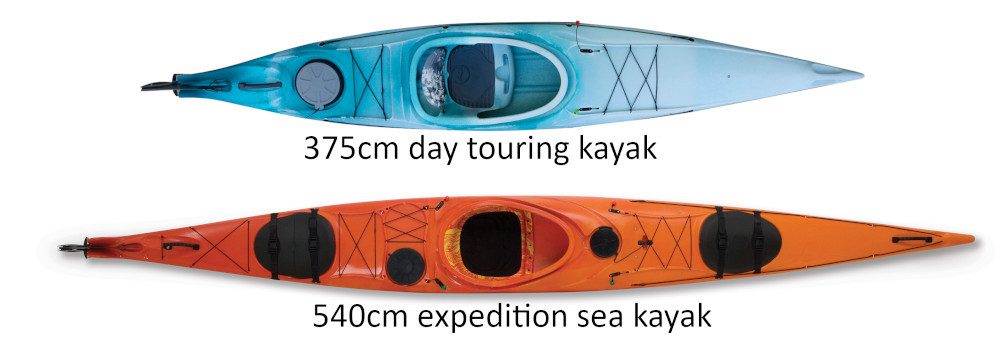You’ve probably heard that a long kayak is faster than a short kayak. In general, that’s right – in the paddling world, if you’re on flatwater with no wind, waves or current, then length equals speed. This is especially true for narrow sea kayaks, multisport boats and Olympic flatwater racers, but still applies to whitewater kayaks.
However, that all changes when the water gets rough or there is a wind or current pushing your kayak around.
A ‘fast’ kayak is often less stable than a ‘slow’ kayak. If you start feeling nervous in a tricky situation, your paddling technique will go out the window. Now your ‘fast’ kayak will be slower than someone who just keeps ploughing on thru the wind/tide/waves in their boring ‘slow’ kayak.

There’s been a few times when I’ve desperately wished that I was in a more stable, shorter kayak, rather than in a long kayak. One time was paddling in large ocean swells, with steep wind waves from the side. Another time in a fast tidal current, with a strong headwind. Other scary moments (they seemed like prolonged minutes!) included ‘surfing’ downwind in a steep following sea, and getting flattened with violent wind gusts as we rounded each headland. Plus the classic downriver racer’s nightmare of ‘wobbling’ awkwardly along buffer waves, as you’re pushed sideways onto vertical bluffs. Years later, those memories are still quite vivid – in each of those situations, I was very much on edge, and ended up hardly making any forward progress. A fast kayak was useless to me.
On a less extreme occasion on an outdoor education trip, my group of senior school students was hugging close to a rocky shoreline, steadily progressing from headland to headland into a 20-25 kt southerly. After a while we came across a bedraggled guy with his long, fast kayak pulled up on a tiny beach. He’d fallen out twice in the gusty wind and choppy waves, and had given up on trying to get home. The kids, paddling their ‘slow’ 420cm touring kayaks, struggled to understand why an experienced paddler couldn’t cope with the conditions.
If you’re planning to do solo trips in a sea kayak or multisport boat, then you probably need a ‘bombproof’ stable kayak. It may be a little sedate speedwise, but it will be well made and have great stability in wind/waves. You’ll still tick off 30-40km per day without any fuss.
